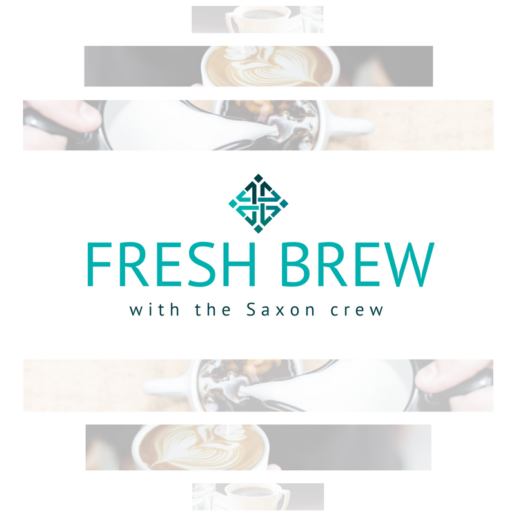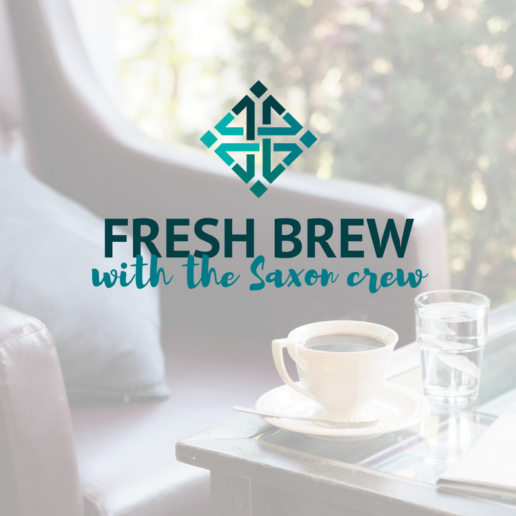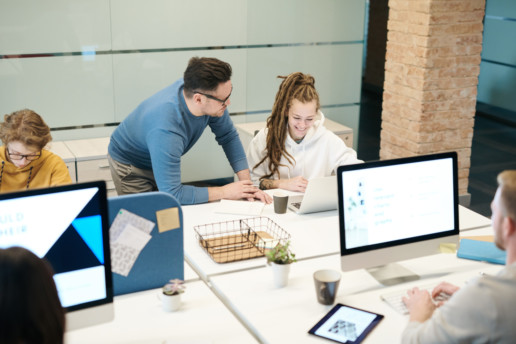Rethink Work-from-Home Employee Perks
Working from home has become a new normal for many employers and employees. With that being said, it may be time to rethink employee perks that expand flexibility and customize work schedules. Read this blog post to learn more.
As working from home stretches into the summer and beyond at many companies, some firms are adopting interesting, innovative incentives to maintain engagement and productivity among telecommuting employees.
Most common among such perks is the expanded flexibility for personal time off and customized work schedules. But many employers consider those options to be table stakes and are raising the ante. Perks related to food and drink, camaraderie, dress code and new technology are being introduced as HR rethinks and adjusts company culture.
"Pre-COVID, working from home was considered a top employee perk," said Cheryl Fields Tyler, CEO of San Francisco Bay-area firm Blue Beyond Consulting. "Now, it's practically considered an entitlement. And with executives [seeing] how effective their home-working employees have been during this situation, it's likely to stick around even after the recovery."
At her firm, "our teamwork has really stepped up. People are supporting each other more and finding new ways to handle responsibilities to get through this, which will be the lasting benefit of this 'change'."
At IBM, CEO Arvind Krishna created and shared a special eight-point pledge that went viral as a model for other C-suites to follow, putting a "human touch" on his entire workforce.
"With employees and companies making such strides in work-from-home execution, there's going to be a massive rethinking of just how you build culture," Fields Tyler said.
Informality Catches On
Many companies are creating clever ways to connect remote employees during and after the workday ends, usually with fun in mind.
Tampa HR consultant Michelle May Griffin, SHRM-CP, has clients who have created a virtual coffee klatsch once or twice a week, designed with an impromptu gathering-in-the-breakroom feel. "Supervisors aren't invited," she said. "Staff can come and go. It's very informal. People can eat lunch or have a cup of coffee and just talk about anything they wish."
At Centurion, a health care company based in Vienna, Va., HR created a voluntary lunch-time video meeting for employees on Zoom to talk about things other than work, said Jennifer Tyrrell, SHRM-SCP, senior director of HR.
"We did one that was called 'Get Up and Move' based on fitness videos so employees could be active, but that didn't draw a huge crowd," she joked. "Others had better participation, such as 'Just Social: Brown Bag Lunch Buddies' for remote workers to take a break and have virtual lunch to catch up with co-workers, and end-of-day Friday happy hours, including one where we played Pictionary."
Griffin shared another story of a small client. On one Friday afternoon, HR reached out to all employees and took drink orders. It then set up a virtual happy hour on Zoom where employees used their drinks—that the company personally delivered to their homes—to toast another great week.
"The company did a good job, packing them in baskets with other goodies," Griffin said.
As for food, some larger companies are offering stipends for daily lunch pickups or delivery, which has become an unanticipated expense for remote employees "now that they aren't able to take advantage of full cafeterias at work every day," said Chris Hoyt, president of CareerXroads, a membership-based talent community of more than 150 companies.
Zoom Fatigue
Virtual meetings have become so common at most companies that "there is more and more talk of blocking out meetings on multiple days each week to reduce stress and prevent 'Zoom fatigue,'" Hoyt said. "For some, there are entire days where either no meetings are called, or at least none that involve a video log-in. That's a well-being perk."
As for home offices, tech equipment stipends can make work and life easier. Hoyt said one organization gave its remote employees full access to a virtual ergonomic assessment that could help determine what equipment they would need to work most productively and funded those purchases.
At Iona, a social services group in Washington, D.C., employees were provided with office furniture and computer technology delivered to their homes, with set up-help provided, said Stacey Berk, a managing consultant with Expand HR Consulting in Maryland. "They bent over backwards to help their employees," she said.
At some companies, encouragement to take a summer vacation is a well-received perk. "Having spent so much time over the past few months working from home, [employees] are pivoting to summer rentals in remote places instead of theme parks or family reunions," Berk said. "Some employers are allowing staff to extend that time away if they split their work time, and may offer to pay for Wi-Fi connections, additional temporary office resources and supermarket gift cards for these types of vacations so that they can productively work in this capacity."
Wellness Well-Done
Berk sees a trend where clients are providing wellness "relief" to their workers by having group stress-relieving exercises, guest virtual speakers or even comic relief, such as themed summer dress-up days. Hoyt agrees that wellness has become an emerging front for many HR leaders.
"Some have been pushing for the ability to incorporate ideas and strategies for years and now are realizing that the pandemic [is the final catalyst] to get initiatives off the ground and running," he said.
"Some company fitness centers are offering virtual workouts much like commercial gyms do," Hoyt added. "A few employers' in-house trainers are getting creative with programs for people who may not have equipment at home but can do workouts with whatever equipment they might have around."
Personalized mental-health care program offerings also are gaining popularity, Hoyt said, such as LyraHealth and Headspace. Both focus on mindfulness and meditation for stress, anxiety, sleep, attention and fitness and enable participants to track their progress. Other popular programs include MeQuilibrium, a well-being and performance platform that helps employees identify and manage stress; and Sleepio, a digital sleep-improvement program featuring cognitive behavioral therapy techniques.
Gifted and Talented
At BHI Insurance in Newark, Del., which boasts 28 employees, HR Director Maria Clyde, SHRM-SCP, offered everyone a list of electronics to choose from as a thank-you gift for adapting well to working from home. She budgeted $40 to $60 per gift.
"We thought that was fitting since everyone who is working remotely is looking to make their lives (and their kids' lives) easier," Clyde said. "I've also seen companies providing headphones and streaming services like Netflix or Disney+ for the kids. People are getting really creative!"
Charitably conscious, Hoyt said some companies are matching or double-matching employee donations to local organizations or for anything related to front-line workers and PPE creation and distribution.
Other benefits that companies can define as perks, Berk said, are a relaxed summer dress standard and the ability to work outdoors, which shows up as an employee's background in virtual meetings. "By not having to wear a blouse or dress shirt, think of the money employees are saving in dry cleaning because they can dress casually," she said. "It's not a lot of savings, but it helps."
Giving employees a greater voice can be considered a perk for some employees. Organizations that previously conducted one employee survey a year—or even every couple of years—are now conducting them more frequently, Berk said. "This gives employees more of a chance to be heard and to have a voice in some policy decision-making, which is one perk you cannot put a price tag on."
Tyrrell said Centurion has conducted more employee surveys recently and found that 90 percent of employees expressed confidence in how the C-suite has been dealing with the crisis, while at-home distractions ranked second lowest among employee challenges.
Many companies are creating incentives for work-from-home employees to voluntarily return to the office. Campus Advantage, an owner and manager of off-campus university student housing, has 70 employees assigned to its Austin, Texas, headquarters.
"Many workers are still afraid to come back," said Angela L. Shaw, SHRM-SCP, vice president of HR. "Our office has a mojo committee that creates fun office events, and we've offered those in the office breakfasts, Taco Tuesdays and yoga classes. On average, we'll have about five employees come in. The others are happy to continue working from home."
Perks on the Chopping Block
Many companies are planning for the next wave of the coronavirus, one that is expected to hit them hard financially during the second half of 2020 and beyond, Berk said. Traditional employee perks likely will be impacted, at least for the short term.
"Expect perks like traditional staff-wide wellness benefits, such as gym memberships, discount programs and celebratory gatherings, will be cut or eliminated and replaced with more modest offerings," Berk said. "Companies are quickly adjusting forecasting and budgeting for the coming year based on the realities of the pandemic. The reimagined office layout and sanitation will be at the forefront for HR and executives, and you could see companies reducing employee benefits, eliminating increases, bonuses, education stipends and executive perks. With the post-pandemic workforce, they have to account for a big in-office sanitation budget and potential reduced profits."
SOURCE: Bergeron, P. (01 July 2020) "Rethink Work-from-Home Employee Perks" (Web Blog Post). Retrieved from https://www.shrm.org/resourcesandtools/hr-topics/employee-relations/pages/rethink-work-from-home-employee-perks.aspx
A new tool for employee temperature checks ensures safety and security of workers
As employers begin to move employees back into the workplace, they have to be mindful of new legal guidance that has come from the CDC and HIPAA. In regards to new legal guidelines set into place, employers and management teams will now have to check employee temperatures. Read this blog post to learn more.
Temperature checks will be mandated at workplaces once employees return to the office, due to legal guidance from the Centers for Disease Control and Prevention, but privacy concerns could heat up among workers concerned for their security.
“It’s now permissible to take employee temperatures, but if employers store it and keep track of it, there’s no exemption from HIPAA and identity laws,” says Dan Clarke, president of IntraEdge — an Arizona-based tech company.
IntraEdge developed a kiosk that privately takes employees’ temperatures, and only shares the results with the employee, keeping any health information concealed from HR. Instead, managers are simply notified if the kiosk gave their employee permission to enter the office, or not, which completely eliminates the potential for HIPAA violations, Clarke says. The kiosk, called Janus, can also prevent sick employees from entering the office if their temperature is too high.
Clarke spoke in a recent interview about how Janus can help employers protect their workforce, while adhering to privacy laws.
How does Janus help prevent the spread of COVID-19?
If we want to limit exposure to COVID-19, we can’t assign someone in the office to take everyone’s temperature; it’s not efficient and it puts more people at risk. Employers need a digital solution, one that puts them in compliance with HIPAA and privacy laws.
Janus uses an accurate thermal camera to take the temperature of the user. Before using it, employees would need to sign up online and provide information to confirm their identity. After that’s done, they’d go to the kiosk and present their identification through their phone. The kiosk will ask them a few questions about how they’re feeling and the camera will take their temperature. The normal temperature range for each employee is personalized based on the individual’s age and medical history. Many people don’t realize our normal temperature increases as we age. If an employee reads at an unhealthy temperature, they’re not allowed inside the office.
How does this help employers stay compliant with HIPAA and other privacy laws?
Employers don’t have access to their worker’s medical history, or the temperatures read by Janus. The kiosk doesn’t display an employee’s temperature on screen. Instead, the employee will receive a text message telling them their temperature and whether they’re allowed inside the office. Printouts are also available for employees who don’t have smartphones.
Is HR or a manager notified when employees aren’t allowed in the office?
Janus doesn’t share with HR what employees’ temperatures were, only if they were given a “yes” or “no” to enter the office. They can receive a text message whenever an employee is given a “no.” This helps employers stay compliant with HIPAA and privacy laws because they never see the full results, and they’re not stored. But it also helps them keep track of their workforce.
It can also be programmed to notify a security officer that someone didn’t pass the temperature check to ensure compliance. We can also program the kiosk to distribute security badges only to employees who pass the temperature check.
Before coronavirus, employees sometimes came to work sick out of fear their colleagues/managers would question their dedication to their job. Do you think this product will help change that after the crisis is over?
I think the crisis is changing the perception of remote work enough that people will be comfortable saying they’re going to work from home when they don’t feel well. Janus can definitely help enforce it, if the employer chooses, but we wanted to ensure it was useful for employers after the crisis is over. It can also be used to clock employees in and out for work and as office security.
SOURCE: Webster, K. (08 June 2020) "A new tool for employee temperature checks ensures safety and security of workers" (Web Blog Post). Retrieved from https://www.employeebenefitadviser.com/news/a-new-tool-for-employee-temperature-checks-ensures-safety-and-security-of-workers
Marinate Your Chicken This Fourth of July with Saxon
Happy Fourth of July! In celebration of Independence Day, the Saxon crew has decided to share one of our favorite summer recipes for this month’s Fresh Brew! We hope you all have a safe and happy holiday!
Marinated Chicken and Onion Kebabs
Ingredients
- 1/2 c. plain yogurt
- 2 plain yogurt 2 cloves garlic, grated
- 1 tbsp. grated fresh ginger
- 1 tsp. garam masala
- 1 tsp. ground turmeric
- 2 tsp. lemon zest, plus 2 tablespoons lemon juice
- Kosher salt and freshly ground black pepper
- 1 1/2 lb. boneless, skinless chicken breasts, cut into 11/2-inch pieces
- Canola oil, for grill grates
- 1 medium-size red onion, cut into 1-inch wedges, then halved crosswise
- 4 pieces flatbread or naan
- Cucumber and Cilantro Yogurt Sauce
Directions
- Combine yogurt, garlic, ginger, garam masala, turmeric, lemon zest and juice, and 1/2 teaspoon each salt and pepper in a bowl. Add chicken and stir to combine. Let marinate 15 minutes.
- Heat grill to medium. Once hot, clean and lightly oil grill grates. Thread chicken and onions onto six large skewers. Grill, turning occasionally, until chicken is cooked through and onion is just tender, 8 to 10 minutes. Grill flatbread until lightly toasted, about 1 minute per side.
- Serve kebabs and flatbread with Cucumber and Cilantro Yogurt Sauce alongside.

This recipe was provided by Country Living. If you’d like to visit the original source, please click here.
Viewpoint: 12 Tips for Return-to-Work Communications
While employers begin to move their employees back into their offices, communication between team members may not be as strong as they were before working remotely. Read this blog post for helpful tips on communicating when returned to work.
While the move to working from home due to the COVID-19 pandemic happened quickly, the return to work will be slower and more complicated.
Employers that haven't made movement back to workspaces and office buildings should think carefully about the implications of the new six-feet-apart world. How will you handle an employee who refuses to wear a mask when required? When will you open the kitchens and make coffee and water available? How many people will you allow in a restroom at a time? Do people have to walk clockwise around the space? Where do you put hand sanitizer stations? Setting aside all of the logistics, how do and will employees feel?
Connect with Employees
Like any other workplace change, making sure employees are aware and understand this new world will be equally as important as the actual changes themselves. Training, education and effective communication are key to returning employees to the workplace.
Below are a number of tips to keep in mind as you communicate return-to-workplace situations:
- Develop a clear and detailed safe work plan, reviewing any policies that need to be updated.
- Write in plain, easy-to-understand language.
- Use images and diagrams where appropriate.
- Outline what building management is doing, how the company is supporting this effort and clear expectations for employees.
- Partner with legal counsel. They can help you steer clear of perceptions of discrimination and other potential employee relations or legal issues.
- Get input from your senior leaders. They should be knowledgeable and included well before you communicate to employees.
- Train your managers and supervisors on the safe workplan and what is expected of them. They are the front line of employee communications.
- Use different media to supplement a written plan. Hold a webinar and record it. Create a video, leverage your online employee portal, or do a podcast.
- Make good use of signs throughout the office to help with key behaviors, including directions to walk down aisles in one direction or to designate one stairwell for walking up and another for walking down.
- Be clear where employees should go with questions.
- Start communicating before workers are allowed (or expected) to return to the workplace, and keep communicating to address new issues and concerns as they arise.
- Explain that the situation is fluid and manage expectations by noting that when new information becomes available the plan will be updated. Communicate those key changes with leadership and employees.
Careful Not to Overdo It
Especially now, employees want to understand what you are doing to keep them safe and to believe that you care. But you don't want to overdo it, either. Whether it's due to a lack of trust or excess worry, some organizations are holding more meetings than usual to "check-in," which employees can find invasive and intrusive.
If "eyes on your employees" was your primary form of performance evaluation, you might be feeling unsettled in this new work-from-home arrangement. In most situations, you've likely hired responsible, talented people who want to, and will, do good jobs under any circumstance. Trust they will, and reward them when they do.
Tip: Let them dictate the check-in frequency. Be willing to tailor your approach to the communication needs of the individuals or groups. Then, over time, survey your employees and ask them how it's working, especially the frequency and content of communications.
Wherever you are along this journey, don't forget employees' needs have shifted and will likely continue to change. Be flexible and willing to adjust your communication approach constantly. Look for that Goldilocks communication approach—not too much, not too little, but just right.
SOURCE: Foster, D. (26 June 2020) "Viewpoint: 12 Tips for Return-to-Work Communications" (Web Blog Post). Retrieved from https://www.shrm.org/resourcesandtools/hr-topics/benefits/pages/12-tips-for-return-to-work-communications.aspx
How to Overcome Your Fear of Making Mistakes
During the time of the coronavirus pandemic, there could have been a rise of fear due to each scenario that has gone on around society. Many may feel as if they fear the missteps which may lead to making mistakes. Read this blog post for helpful tips on how to overcome fear.
The Covid-19 crisis and its fallout — including recession, layoffs, and uneven economic pain — as well as recent protests over police brutality and demands for racial justice have presented many of us with challenges that we’ve not encountered before. The high-stakes and unfamiliar nature of these situations have left many people feeling fearful of missteps. No one can reduce mistakes to zero, but you can learn to harness your drive to prevent them and channel it into better decision making. Use these tips to become a more effective worrier.
Don’t be afraid or ashamed of your fear.
Our culture glorifies fearlessness. The traditional image of a leader is one who is smart, tough, and unafraid. But fear, like any emotion, has an evolutionary purpose and upside. Your concern about making mistakes is there to remind you that we’re in a challenging situation. A cautious leader has value. This is especially true in times like these. So don’t get caught up in ruminating: “I shouldn’t be so fearful.”
Don’t be ashamed or afraid of your fear of making mistakes and don’t interpret it as evidence that you’re an indecisive leader, or not bold, not visionary. If you have a natural tendency to be prevention-focused, channel it to be bold and visionary! (If you struggle to believe this, identify leaders who have done just that by figuring out how to prevent disasters.)
Use emotional agility skills.
Fear of mistakes can paralyze people. Emotional agility skills are an antidote to this paralysis. This process starts with labeling your thoughts and feelings, such as “I feel anxious I’m not going to be able to control my customers enough to keep my staff safe.” Stating your fears out loud helps diffuse them. It’s like turning the light on in a dark room. Next comes accepting reality. For example, “I understand that people will not always behave in ideal ways.” List off every truth you need to accept. Then comes acting your values. Let’s say one of your highest values is conscientiousness. How might that value apply in this situation? For example, it might involve making sure your employees all have masks that fit them well or feel comfortable airing any grievances they have. Identify your five most important values related to decision-making in a crisis. Then ask yourself how each of those is relevant to the important choices you face.
Repeat this process for each of your fears. It will help you tolerate the fact that we sometimes need to act when the best course of action isn’t clear and avoid the common anxiety trap whereby people try to reduce uncertainty to zero.
Focus on your processes.
Worrying can help you make better decisions if you do it effectively. Most people don’t. When you worry, it should be solutions-focused, not just perseverating on the presence of a threat. Direct your worry towards behaviors that will realistically reduce the chances of failure.
We can control systems, not outcomes. What are your systems and processes for avoiding making mistakes? Direct your worries into answering questions like these: Is the data you’re relying on reliable? What are the limitations of it? How do your systems help prevent groupthink? What procedures do you have in place to help you see your blind spots? How do you ensure that you hear valuable perspectives from underrepresented stakeholders? What are your processes for being alerted to a problem quickly and rectifying it if a decision has unexpected consequences?
Broaden your thinking.
When we’re scared of making a mistake, our thinking can narrow around that particular scenario. Imagine you’re out walking at night. You’re worried about tripping, so you keep looking down at your feet. Next thing you know you’ve walked into a lamp post. Or, imagine the person who is scared of flying. They drive everywhere, even though driving is objectively more dangerous. When you open the aperture, it can help you see your greatest fears in the broader context of all the other threats out there. This can help you get a better perspective on what you fear the most.
It might seem illogical that you could reduce your fear of making a mistake by thinking about other negative outcomes. But this strategy can help kick you into problem-solving mode and lessen the mental grip a particular fear has on you. A leader might be so highly focused on minimizing or optimizing for one particular thing, they don’t realize that other people care most about something else. Find out what other people’s priorities are.
Recognize the value of leisure.
Fear grabs us. It makes it difficult to direct our attention away. This is how it is designed to work, so that we don’t ignore threats. Some people react to fear with extreme hypervigilance. They want to be on guard, at their command post, at all times. This might manifest as behavior like staying up all night to work.
That type of adrenalin-fueled behavior can have short-term value, but it can also be myopic. A different approach can be more useful for bigger picture thinking. We need leisure (and sleep!) to step back, integrate the threads of our thinking, see blindspots, and think creatively. Get some silent time. Although much maligned, a game of golf might be exactly what you need to think about tough problems holistically.
Detach from judgment-clouding noise.
As mentioned, when people are fearful they can go into always-on monitoring mode. You may have the urge to constantly look at what everyone else is doing, to always be on social media, or check data too frequently. This can result in information overload. Your mind can become so overwhelmed that you start to feel cloudy or shut down. Recognize if you’re doing this and limit over-monitoring or overchecking. Avoid panicked, frenzied behavior.
On its own, being afraid of making mistakes doesn’t make you more or less likely to make good decisions. If you worry excessively in a way that focuses only on how bad the experience of stress and uncertainty feels, you might make do or say the wrong things. However, if you understand how anxiety works at a cognitive level, you can use it to motivate careful but bold and well-reasoned choices.
SOURCE: Boyes, A. (24 June 2020) "How to Overcome Your Fear of Making Mistakes" (Web Blog Post). Retrieved from https://hbr.org/2020/06/how-to-overcome-your-fear-of-making-mistakes
How employers and the economy win with remote work
Employers have been highly affected by the situations that the coronavirus pandemic has brought upon them, but so has the economy. The coronavirus has seemed to bring in a dark cloud over most situations, but now it can be looked at as helping both employers and the economy with the remote working situations. Read this blog post to learn more.
As high profile employers such as Twitter and Slack announce that they will allow employees to work from home indefinitely, other organizations have also noticed the advantages of a remote work model.
Aside from increased productivity and improved mental health for employees, employers can save $11,000 per employee on office costs and even reduce their carbon emissions, says Moe Vela, chief transparency officer at TransparentBusiness, a company that provides a remote workforce management platform.
When it comes to remote work, ”everyone wins across the board,” he says. “Remote work should be viewed no differently than a healthcare insurance package, dental insurance, paid time off, sick leave, or family leave.”
Article Sustaining an active sales pipeline
What do you do when a global health crisis has slowed your flood of new leads to a drip?
PARTNER INSIGHTS
SPONSOR CONTENT FROM
Vela shared his thoughts on why remote work is the new normal and how employers can use technology to ensure that the experience for their employees is seamless.
How does remote work benefit employers and employees?
Employers benefit tremendously. On average, an employer saves $11,000 per year per employee in a remote workforce model. They need less commercial office space, so their bottom line actually improves because they can cut down on their office expenses. If you have 500 people in an office setting, that's 500 people you need supplies, equipment and infrastructure for — those costs get dramatically reduced or go away completely.
The other benefit to the employer is that productivity goes up in a remote workforce model. There is less absenteeism, workers are happier and also healthier because you're not confined in an office space spreading germs.
Your work life balance is improved dramatically by a remote workforce model for employees. On average, an employee gets two to three hours of their day back into their life because they don't have to commute. That's two to three hours you can spend with your family, that you can engage in self care, that you can run your errands, whatever it is you choose to do.
What advantages does remote work have outside of work?
One beneficiary in a remote workforce model is the economy. When those employees get those two to three hours back, guess what they're doing: they're spending money that was not being put into the economy before.
Another beneficiary is the environment. During this pandemic, there are around 17% less carbon emissions being emitted into the atmosphere and the environment. Climate change is impacted and our environment is a winner in a remote workforce model.
How can employers ensure a seamless remote work experience?
There are three fundamental technologies on the marketplace that every employer should immediately start using. Number one, video conferencing. We're all using it, it works just fine, you’ve got a lot of options in the marketplace from Skype to Zoom, to Google. Number two, file sharing. You have all kinds of file sharing software and services out there in the marketplace. Number three, remote workforce management and coordination software. All you have to do is implement them, and the risk is mitigated almost to nothing.
How can an employee approach management about working from home permanently?
Don't be afraid to ask your employer. Communicate your request very succinctly and very clearly. Let your boss know that you've thought this through. Prove to them that you have the self-discipline, that you have the loyalty, that you're trustworthy, and that you have the environment at home to be effective at working remotely. Use the fact that you've already been doing it as an affirmation, to attest to the fact that it can be done seamlessly and productively.
Best tools to support your remote workforce
The coronavirus pandemic has brought many strains onto the workforce, and some are caused by the fact that employees are now having to work from home. Although working from home can come with benefits, it can also create challenges that weren't noticed before. Read this blog post to learn more.
The remote workplace comes with a lot of benefits — including increased productivity and better focus. But it’s also causing challenges to both employees’ mental and physical well-being.
Disruptions from the coronavirus have infiltrated the daily lives of employees. Everything from proper nutrition to child care and financial concerns are major focus points to many.
Many companies are now stepping up their efforts to adapt their benefit offerings to support employees who work from home. Employers are considering options like work-from-home office policies and stipends, ergonomic workplaces at home or mental health and telemedicine checks.
From virtual fitness memberships and snack boxes to tech tools and online wellness resources, here are some of the best tools employers can provide to support their remote workforce.
Free food at home
While almost everyone is working from home, many employees have lost a popular office perk – free food. That’s why Stadium, a New York City-based group lunch delivery company, introduced a new service in early June where employers can have snacks delivered nationwide to any home office. The service, called SnackMagic, lets employees choose individual snacks and beverages that they like within a gift budget set by the employer.
The coronavirus has also exacerbated the challenge of accessing healthy food and proper nutrition for many across the United States. To address those concerns, meal subscription company Freshly created a new service called Freshly for Business to provide healthy and affordable meals for employees working remotely. The program allows employers to offer free or subsidized meal plans consisting of up to 12 meals per week. Employers including PwC and KPMG, among others, are partnering with Freshly, which costs an average of $8 per meal per employee.
Mindfulness and stress management
As a result of these circumstances, Unplug Meditation, a Los Angeles-based drop-in meditation studio and app, is seeing a surge in corporate programs, and has partnered with companies including Disney, Mattel and Google. The app offers everything from virtual meditation and sound bath sessions, to team building, stress management and customized wellness programs.
Chill Anywhere, a mindfulness and meditation app, is built specifically for the workforce, and provides live mindfulness video practices. It can be offered as an employee benefit or part of an organization's Employee Assistance Program. App users can track their mood before and after each session to see how their mindfulness practice impacts their day-to-day lives.
Financial wellness
As the pandemic sends shockwaves through the U.S. labor market with layoffs, pay cuts and furloughs, employers are making efforts to support the financial security and resiliency of their employees.
SmartPath, a financial counseling platform, launched a free online resource called the Money Moves Quiz to help employees build confidence and a secure financial plan by answering 15 questions about their current situation. The questions cover topics such as levels of emergency savings, home ownership or employment status. Based on the answers, SmartPath will provide a clear financial plan tailored to the employee’s needs.
In March, Alegeus, a consumer-directed healthcare solutions company, introduced a new offering called the Employee Care Card, a debit card that enables employers to offer targeted financial support for employees to address their most immediate needs during the pandemic. Employers determine the amount they wish to contribute per employee, as well as the type of eligible expenses they want to allow — from groceries and home office supplies to educational supplies. Unlike cash or gift cards, employers control how the dollars can be spent, preserve unspent dollars and gain real-time insight into employee spending trends.
As head of an HR tech company and mother of two and CEO from another employee benefits firm, felt the effects of this firsthand. That’s why she decided to offer Outschool.com, an online education platform for children ages 3 to 18, as a benefit to her employees. Outschool offers classes on subjects ranging from life skills, arts and music, to math, coding and science.
Screen Sitters, a virtual child care service connecting sitters with families to entertain children via live 1:1 video, is another service offering overextended working parents some relief. Employers can get flexible packages that integrate into their existing benefits programs. All of the company’s sitters are vetted through a 5-point screening process to ensure safety and a hassle-free transaction for the parents. Children get a personalized experience, as the sitter plans sessions ahead of time based on each child’s personal interests.
This summer, a virtual camp experience is what many facilities and families are choosing to keep their kids safe. Anna Birch, a 23-year summer camp veteran has replaced her usual summer adventure camp programs with an online alternative. The new resource, called The Camp Cloud, provides children ages 6 to 17 with the opportunity to make new friends and engage in guided activities led by institutions like science centers, museums, zoos and aquariums, schools and theaters, without need for significant parental assistance.
Team building
Summer is typically a time when companies plan team outings, parties and activities to give employees an opportunity to bond outside the office. But with COVID-19 taking a toll on group activities, many of those events are now cancelled.
HealthKick, a corporate wellness program, provides a personal well-being hub for companies and their employees to participate from home. From using in-home workout services to taking cooking classes over Skype with meal delivery kits, teams can take advantage of many different activities this summer that they can do together from their new work-from-home offices.
Mental health resources
Employee mental health is a workplace crisis, with many employees experiencing increased anxiety and depression during the pandemic. To address care accessibility issues — including in-person sessions and treatment — imposed by COVID-19, many employers are offering employees access to mental health care online.
Healthstat, a provider of virtual employer-sponsored health centers, is offering a virtual mental health solution, Ment4Me, that helps employers improve access to high quality mental health services for employees who are seeking support for treatable mental health conditions. Ment4Me aims to help reduce the stigma that can often be associated with mental illness. It’s also using artificial intelligence to offer the chatbot “Tess,” a provider of on-demand mental health support.
Mental health benefits provide Happify Health has designed a new program for employees and health plan members to remotely access mental health resources to meet the recent surge in demand. Happify Connect is a part of the organization’s selfcare platform and allows employees to connect with mental health care that is more conducive to the current work-from-home environment. The program directs employees to mental health resources, including self-guided tools within the Happify platform, higher-touch care through integrated partners such as online therapy and a mental health provider directory.
Supportive, a mental wellness support platform, offers 24/7 chat-based peer support on any emotional well-being topic ranging from depression, anxiety and loneliness to daily life struggles like parenting, relationship conflicts or stress and burnout. Users answer the question "what's your struggle?" for Supportiv to analyze and auto-match them to a small group of peers who relate. Each group has a live moderator to guide the chat, make sure each user's needs are met, and vet the personalized resources that appear as hyperlinks in real-time. It can be deployed as a dedicated web link, integrated into an EAP, or embedded as a chat window that appears on any existing benefits portal.
Physical well-being
With gym closures disrupting wellness benefit offerings as well as employees’ workout routines, employers are now looking to virtual solutions.
Earlier this spring, Virgin Pulse, a global provider of digital wellness and wellbeing solutions, launched a dedicated COVID-19 hub to provide employees with resources — ranging from webinars to blog posts — on fitness and nutrition. It aims to help employees build and maintain healthy routines by reducing stress, staying active, being productive, eating healthy and sleeping well. The hub is a resource app for Virgin Pulse users, but also gives free access to health and wellbeing content, programs and resources.
BurnAlong is an online video health and wellness platform where employees can take classes from a network of hundreds of instructors across 45 categories ranging from cardio and yoga to stress, chronic conditions and diabetes. They can take classes alone, or invite friends and colleagues to join them live online for social motivation. The platform, which is used by companies, hospitals, insurers and brokers, is partnered with on-site and local gyms, studios, instructors and wellness professionals to help people achieve their health and wellness goals.
An ergonomic workplace
With employees using everything from their kitchen table to their couch as their workplace, working from home sometimes brings bad ergonomic habits and solutions.
Bad ergonomic habits, if left unaddressed, could mean higher healthcare costs for the employer, lower productivity and the increased potential for an employee to sustain a medical condition.
To be mindful of employees’ who don't work out of an office too, some employers are reimbursing them for remote office furniture.
Livongo, a digital health services company, is offering its remote workers reimbursement for ergonomic and job essential furniture. With the whole company being remote during the pandemic, the office furniture reimbursement benefit was extended to all employees to help make their home offices more efficient. Even before the pandemic, Livongo had a strong remote workforce with more than 1/3 of its employees working remotely. The company says taking the time to set up a workplace that is safe, comfortable and limited from distractions is important for employees to help manage their time and well-being.
SOURCE: Nedlund, E. (19 June 2020) "Best tools to support your remote workforce" (Web Blog Post). Retrieved from https://www.employeebenefitadviser.com/list/best-tools-to-support-your-remote-workforce
What Your Youngest Employees Need Most Right Now
During the trying times that the coronavirus has placed upon the workforce, it seems to be creating a bigger unknown difficulty in younger employees. Read this blog post to learn more.
The long-term toll of the coronavirus is unknown, but its effects on our health care system and the economy have already been catastrophic. And while the immediate concerns of skyrocketing unemployment and a stalled economy must be addressed today, employers also need to begin considering how to rebuild for the employees returning to the workforce — or entering it for the first time.
This includes Gen Z, the youngest members of the workforce and those currently in secondary school or college. Many who were just beginning their career journey have been furloughed or fired. Those in school were suddenly confined to their homes. Collectively, they are experiencing the greatest national trauma since the Great Depression and World War II.
Ultimately, for the workforce to be equipped to move forward and thrive, employers will need to address the fallout resulting from Covid-19 on their youngest — and future — employees.
How Events Shape Generations
As the Pew Research Center notes, looking at world events and other formative experiences through a generational lens helps provide an understanding of how people’s views of the world are shaped. Young people who grew up during the Great Depression and defended and supported the nation in World War II were coined “The Greatest Generation.” Once past the traumas of these extraordinarily difficult years, this generation shared characteristics that included a patriotism manifested by reverence for American ideals, a belief in the wisdom of government, and a frugality born of severe want.
For Millennials, the horror of 9/11 and the global economic crisis that began in 2007 were calamitous events that were life-altering for their generation. As many were sitting in classrooms, word of airplanes crashing into buildings spread through their school; frightened teachers, family members, and friends were unable to offer their usual reassurance that everything would be okay. The chaos that followed became the touchstone for a future where potential terrorist attacks were an ever-present theme in the way Millennials interacted with the world around them.
As they later began to make their way into the workplace, the economy collapsed. Job offers were rescinded, full-time opportunities became part-time without benefits, and many new hires were the first fired. A generation with an undeserved reputation for disloyalty had to change jobs frequently simply to keep up with basic bills and crushing student debt. Together, these experiences contributed to a profile of a generation more likely to seek order in their world and meaning in their work.
Today, even as the coronavirus has been merciless in its impact on people of all ages, the long-term effects on the Gen Z cohort of adolescents are likely to be particularly severe.
For the rest of their lives, the time the world stopped will be seared in Gen Z’s collective memory, a generation-defining moment that instilled deep fears about their uncertain future. Overnight, they lost their daily interactions with the teachers who trained them, coaches who mentored them, clubs that fulfilled them, and friends who sustained them through the painful ordeals of youth. Milestones such as proms, plays, athletics, and the ritual of graduation can be crucial to social and emotional development, each experience serving as a rite of passage to the next stage of life. These lifecycle markers of adolescence that were nervously anticipated and excitedly shared swiftly vanished.
How Companies Can Support Gen Z Employees
It will be years before sufficient data exist to quantify the full impacts of this experience on Gen Z. Existing research, however, can help employers learn what they should expect and how they can best manage their Gen Z employees, today and in the future.
Research in three areas offers a good start for this analysis: skill development, stress management, and building emotional intelligence.
Skill development. Gen Z’s learning has been disrupted in a way that schools were unequipped to manage. Some converted course work to online formats, often implemented by teachers and professors untrained for such a platform. Others minimized direct instruction, urging students or (depending on the grade level) parents to turn to independent projects and digital resources.
In most instances, learning has been attempted in the presence of entire families similarly house-bound and juggling multiple responsibilities — environments that are not conducive to instruction without any preparation. Grades have been converted to pass/fail, tests have been abandoned, and deadlines extended.
These options may be right for the moment, but likely will have costs. Research shows that Gen Zers already experience a difficult cultural transition between college and the professional world that can leave them feeling disoriented and confused. Now that their structured learning has been upended, employers and employees may need to develop greater patience with Gen Z’s adjustment to the professional world and a greater focus on intergenerational mentoring and support.
Employers should consider thoughtfully designed programs to ease Gen Z’s transition by, for example, rethinking orientation programs, early assignments, and mentoring focusing on the development of expertise. For example, orientation programs generally consist of a short-term introduction to manuals, computer systems, and other basics of the workplace. A more comprehensive approach could extend orientation throughout the first-year work experience, offer rotations throughout the organization, and include programs to help new hires integrate into the culture of the workplace. Programming can also address substantive job requirements, offer strategic career support, and provide training on the organization’s goals and objectives, allowing employees to appreciate where they fit and why they matter.
Mentoring, too, can be a powerful way to leverage generational diversity. Research demonstrates that, properly coached, new professionals will develop faster because their learning has been enhanced and guided. To maximize the opportunity for a successful mentorship program, employers should ensure managers understand the benefits of strengthened intergenerational relationships, dispel negative perceptions that could weaken engagement, and provide the needed time and resources. One way to accomplish such buy-in is by including reverse mentoring programs where young employees help senior workers improve their skills in technology and social media. For members of Gen Z, such mutually-supportive relationships can enhance their expertise and ease their transition into the workplace, offering employers the added bonus of a stronger multigenerational culture.
Of course, the most significant and potentially enduring adjustment that workplaces had to make during this pandemic has been the implementation of remote working arrangements. The sudden shift was forced on employers by a crisis, but workplace experts have long advocated for greater flexibility based on changing gender and age demographics, globalized businesses, and technology improvements. As businesses begin to rethink how they open their doors, they should also consider building new transition and learning opportunities into the culture of flexibility that younger workers are seeking.
Stress management. For more than a decade, researchers have noted an alarming trend: Gen Z reports higher levels of anxiety and depression than other generations. Studies also tell us that childhood exposure to significant stress can impact brain development and affect mental and social development. If Gen Z’s baseline already shows high levels of stress, what will the impacts of this pandemic be when it comes to their work and careers?
Most companies are aware that unaddressed employee stress and anxiety can also result in absenteeism, turnover, and lowered productivity. Recent data estimate that the annual cost of job stress to U.S. businesses exceeds $300 billion. But too few firms have developed effective programs to help their employees with mental health struggles. In fact, studies shown that an effective stress management policy operates at the employee, workplace, and organizational levels. In particular, organizational approaches lead to more sustainable results than interventions solely directed to individuals.
Further, because Gen Zers are starting their careers with higher levels of anxiety exacerbated by the coronavirus pandemic, employers can adapt existing research and best practices to create customized programs for young workers. This could include early-career affinity groups that encourage open conversation in a supportive environment. In addition, coaching interventions can boost an individual’s confidence in their ability to succeed and reduce anxiety, helping to keep minor performance challenges from becoming career-damaging incidents.
Emotional intelligence. Research demonstrates that emotional intelligence, consisting of self-awareness, self-regulation, motivation, empathy, and social skills, is a critical element of effective leadership — and can be taught and learned. Employees who develop emotional intelligence can provide a foundation for a respectful work environment and a talent pool of future managers. This area of research offers both challenges and opportunities for Gen Z employers.
In having to cope with a shut-down of life as they knew it at such a young age, many Gen Zers have experienced a massive interruption in their ability to discover what motivates and fulfills them. Because of this, they’ll need more time in their young adult years to undertake this self-exploration. Employers can help fill this gap by offering programming that helps build emotional intelligence from the outset of their careers — not several years down the road. One note: I would recommend eliminating the phrase “soft skills,” a term that actually denigrates the importance of training and development in these important areas.
Employers are likely to benefit from the likelihood that Gen Z enters the workplace with a greater level of empathy and adaptability, qualities that are critical components of emotional intelligence. Having experienced both the significant disruption to their own lives and the pain and sorrow felt by friends and loved ones who suffered during the pandemic, Gen Zers are likely to be vigilant to the emotions of others at work.
Companies have the opportunity to help members of Gen Z become the Next Great Generation of leaders. Having been tested at a very young age, they will bring a special blend of resiliency and humanity to the workplace. Employers can take advantage of these unique formative experiences by providing structured support to their younger employees that will smooth their transition and ensure their place as valued members of the workforce.
SOURCE: Rikleen, L. (03 June 2020) "What Your Youngest Employees Need Most Right Now" (Web Blog Post). Retrieved from https://hbr.org/2020/06/what-your-youngest-employees-need-most-right-now
Meal program provides healthy lunches to remote workers
The coronavirus pandemic has placed many disruptions in the day-to-day lives of employees, which has caused both mental and physical challenges. Research has shown that more people are now snacking or eating more now, due to the quarantine brought upon many. Read this blog post to learn more.
Disruptions from the coronavirus have infiltrated the daily lives of employees, causing challenges to both our mental and physical well-being. Focusing on proper nutrition is on the back burner for many.
Twenty-seven percent of people reported snacking more during coronavirus, and 15% said they are eating more often than usual, according to a study by the International Food Information Council. Forty-two percent have been relying more on pre-packaged foods than in the previous month, despite believing they are a less healthy option.
“The quality of fuel we put in our body ultimately controls the output,” says Michael Wystrach, CEO of Freshly, a meal subscription service. “So how well our brain functions, how our emotions and hormones are released, how productive we are, it really does start with diet.”
The coronavirus has exacerbated the challenge of accessing healthy food for many across the United States. While there has been a skyrocketing demand for groceries and grocery delivery services during the pandemic, 37 million Americans are considered “food insecure,” meaning they lack access to affordable and nutritious food options.
To address those concerns, Freshly created a new meal service called Freshly for Business to provide healthy and affordable meals for employees working remotely. The program allows employers to offer free or subsidized meal plans consisting of up to 12 meals per week. Employers including PwC and KPMG, among others, are partnering with Freshly, which costs an average of $8 per meal per employee.
“We used our platform to solve the needs of customers who are saying, we have a lot of employees working at home who are working hard but are strained and have a lot of challenges on their plates,” Wystrach says. “Employers wanted to provide them a benefit of healthy food by signing up a few dozen to thousands of employees very quickly.”
Lack of proper nutrition can have devastating and expensive consequences: In the U.S., 40% of adults are obese, and 90% of overweight individuals have prediabetes or Type 2 diabetes, a condition often caused by poor diet. According to the American Diabetes Association, the cost of medical expenditures and lost productivity due to diagnosed diabetes was $327.2 billion in 2017, the most recent data available.
“Type 2 diabetes is the fastest growing disease in America, and it’s principally caused by poor diet. It takes a huge toll on employers and employees,” Wystrach says. “One of the challenges now is the traditional lunch hour is gone and convenience is the pinnacle. But we make poor decisions when we rely on convenience with our food.”
Providing food in the workplace is a much desired benefit, with 73% of employees saying they want healthy cafeteria and snack options at work, according to a survey by Quantum Workplace and Limeade. However, just 32% provided free snacks and food, and only 17% had an onsite cafeteria available for workers, according to the Society for Human Resource Management.
As employers begin considering their return-to-work strategies and how they will make their offices safe and their benefits supportive of the health and well-being of their employees, providing meal options should be a major consideration, Wystrach says.
“Especially as we think about social distancing, the less you’re sending your employees out, the safer everyone is,” he says. “Employers will also be thinking about healthcare costs post-COVID. How do they keep overall healthcare costs down? It’s really in everyone’s benefit to provide benefits that promote health and wellness.”
Meal offerings and proper nutrition are a win-win for employers and their workers, Wystrach says.
“Health and happiness ultimately creates a more productive employee,” he says. “When you’re trying to find a win-win for everyone, it drives productivity, it creates happy employees, and it reduces cost over time. There will continue to be a focus on benefits that provide that.”
SOURCE: Place, A. (12 May 2020) "Meal program provides healthy lunches to remote workers" (Web Blog Post). Retrieved from https://www.employeebenefitadviser.com/news/meal-program-provides-healthy-lunches-to-remote-workers
What Happens When Employers Violate Shelter-in-Place Orders?
During the coronavirus pandemic, many states are allowing only essential businesses to stay open to the public, while other businesses are on a shelter-in-place order. Read this blog post to learn more.
In many states, only essential businesses can stay open to the public and only critical staff can remain at the worksite during the coronavirus pandemic. So what happens when employers ignore the rules? In some jurisdictions, employers can face civil or criminal penalties.
Officials in some states, including California, Georgia and New York, are asking people to report businesses that are violating shelter-in-place orders.
"Each and every one of us is called to work together and cooperate with emergency responders and public officials who are working hard to keep all New Yorkers safe," said New York Attorney General Letitia James.
We've rounded up articles and resources from SHRM Online and other trusted media outlets on shelter-in-place orders.
What Is an Essential Business?
To help combat the spread of COVID-19, the respiratory disease caused by the coronavirus, many state and local governments are issuing stay-at-home or shelter-in-place orders that only permit "essential" businesses to remain open. The distinction between "essential" and "nonessential" businesses isn't the same in each location, so employers need to review the specific orders that apply to their operations. Generally, essential businesses include health care, first responders, food production and delivery, medical supply, public utilities, communications and information technology, grocery stores, and gas stations. Nonessential businesses typically must allow employees to work remotely, close for a period of time or reduce their operations to certain activities that are necessary to preserve the business.
State and Local Coronavirus Decrees Raise Questions
Gray areas in state orders call for careful introspection and decision-making by businesses. Should they find a way to stay open to pay workers and maintain customers, or close for a less tangible public good—helping to prevent the spread of COVID-19? "Those are extremely difficult decisions to make and not the sort of thing most HR professionals were having to deal with five months ago," said Jackie Ford, a partner at Vorys, a labor and employment law firm in Houston, which issued its own citywide shelter-in-place rules on March 24. "It's a whole new skill set."
Civil and Criminal Penalties May Apply
Employers must follow shelter-in-place orders or they could face civil or criminal penalties. In Michigan, for example, violating the state's order is a criminal misdemeanor and businesses that don't comply can be fined and possibly shut down.
States with Shelter-in-Place Orders
Many state and local governments are implementing strict measures, but the duration of the orders vary. For instance, Alabama's order is in place until April 30, Virginia's expires June 10 and California's is effective until further notice. Here's a chart that shows which states have ordered nonessential businesses to close and where public officials have encouraged or mandated residents to stay at home.
Michigan Extends Retaliation Protections Amid COVID-19 Outbreak
Some states are also addressing coronavirus-related issues in their antiretaliation rules. For instance, on April 3, Michigan Gov. Gretchen Whitmer issued an executive order prohibiting employers from discharging, disciplining or otherwise retaliating against an employee for staying home from work because the employee tests positive for COVID-19, displays principal symptoms of COVID-19, or has had close contact with an individual who has tested positive or has symptoms.
Showing Compassion May Minimize Risk of Employee Claims
Care, show compassion, connect, communicate and be flexible—these are COVID-19's HR lessons. Johnny C. Taylor, Jr., SHRM-SCP, president and CEO of SHRM, summed things up as follows: "Every workplace operates under a set of guiding principles, whether overtly expressed or more subtly embedded in the culture. This is the moment to examine the principles that define you as an employer and a corporate citizen, and ensure they are ones you want to uphold and are prepared to live. Employees will rest easier knowing that you are operating under a strong value system that doesn't waver in good times or bad."
SOURCE: Nagele-Piazza, L. (13 April 2020 "What Happens When Employers Violate Shelter-in-Place Orders?" (Web Blog Post). Retrieved from https://www.shrm.org/resourcesandtools/legal-and-compliance/state-and-local-updates/pages/when-employers-violate-shelter-in-place-orders.aspx












